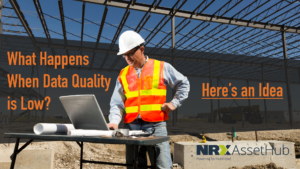Migrations are an important part of refining your existing data and inputting it into a new, more intuitive system. For example, moving to a new EAM/CMMS system can help improve reporting, updating, and analyzing data. Moreover, migrating to a new system allows you to adopt best practices and improve your asset and maintenance master data.
However, all the transferred asset and maintenance data must retain its integrity to prevent unexpected complications like imperfect mappings between the source and target EAM system. Below are a few considerations to get ahead of this potential problem.

So What Are the Best Strategies to Keep Quality High?
- Conceptualize the new and better EAM/CMMS system. Knowing your target EAM/CMMS system beforehand can go a long way. Knowing your new system’s ins and outs before transferring any data is better, especially since your target system will have new features and different options to store data. Making yourself familiar and training your team to make the most of your new system can avoid data gaps and information loss that result in new features not functioning to their full potential.
- Plan a separate project. By separating your migration project, you are more likely to plan, budget, and come up with appropriate deadlines to complete your project. Data migration requires a sufficient commitment; much planning must be done to ensure that your asset and maintenance data is not lost in transit. Also, assigning an appropriate team who understands your assets to work on this project can ensure your organization is not missing out on any crucial steps.
- Verify the quality of your data prior to export. Before transferring any old data into your new target system, ensure that your old data is accurate and up to date. It is important to quickly audit your previous data to know what needs to stay and what’s better left omitted. It also provides an opportunity to add consistency and standards to how your assets are organized – such as through asset hierarchy management.
- Prepare to put in the work. Finally, you need to prepare for any delays in your transfer process. Data migration is a lengthy process, and patience is a virtue in this case.
How We Can Help
If you’re seeking assistance in migrating your asset and maintenance master data during an EAM migration, feel free to reach out and book a demo or download our brochure for more!
What Happens When Data Quality is Low? Here’s a Thought.
Setting Up Your Data for a Migration Project
Avoiding Asset Data Loss During an EAM Migration
Share this article




